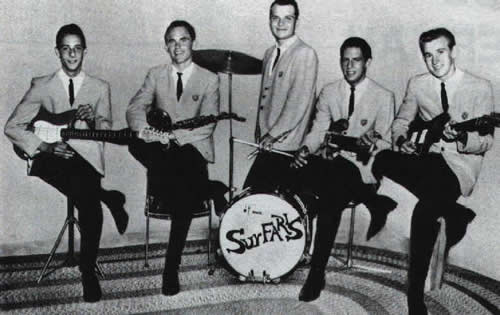A Glendora, CA, surf group remembered for “Wipe Out,” the number two 1963 hit that ranks as one of the great rock instrumentals, featuring a classic up-and-down guitar riff and a classic solo drum roll break, both of which were emulated by millions (the number is no exaggeration) of beginning rock & rollers. They recorded an astonishing number of albums (about half a dozen) and singles in the ’60s; the “Wipe Out” follow-up, “Point Panic,” was the only one to struggle up to the middle of the charts. The Surfaris were not extraordinary, but they were more talented than the typical one-shot surf group, and people noticed them for that. No one can forget the intro on the drums! Many high school bands require the drum line be learned for percussionists.
Main Riff


